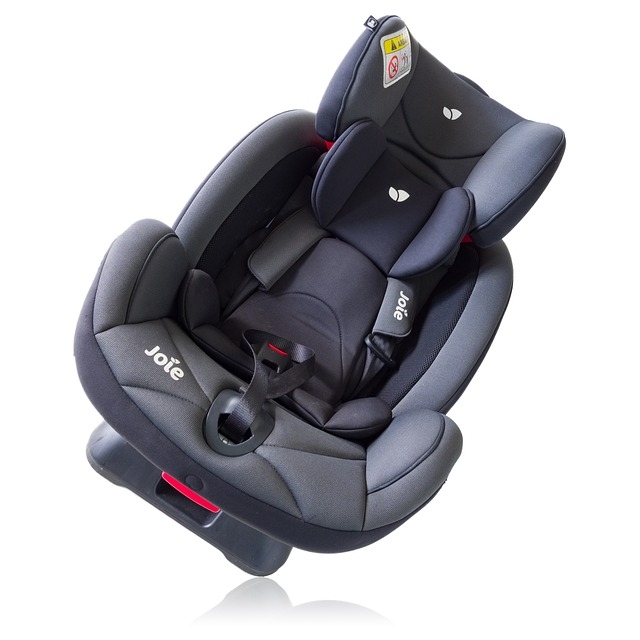Did you know that vehicle-related injuries are the leading cause of death for children in Western Australia? They are also the third most common cause of child hospitalisation in the state.
Motor vehicle accidents injure children at alarming rates in Western Australia. That is why strict child seat guidelines have been put in place to help protect child passengers in the event of a motor vehicle accident. These guidelines set specific child restraint rules based on their size and age.

Age Guidelines for Child Seats
Let’s look at some examples of these guidelines according to age:
6 Months and Younger
Position the child seat restraint to face the rear of the vehicle. It should be an adjustable rearward-facing seat that can accommodate the size of the child’s body and the space in the back seat rows.
You cannot put the child seat in the front passenger seat if there are back seat rows available. You must always use the back seats for the child restraints if they exist in the vehicle. And if the child seat doesn’t fit in the car properly and securely, it is not suitable for your child.
6 Months to 4 Years Old
You have a few choices for restraining a child between 6 months and four years old.
The first choice is the rearward-facing child seat described in the previous guideline. Alternatively, you can use a forward-facing seat if a harness is built into it. But regardless of the seat chosen, it must be adjustable to fit your child and the vehicle perfectly.
This child seat must go in the back seat area if one exists in your vehicle. Otherwise, install the seat in the front passenger seat.
4 to 7 Years Old
A rearward-facing seat is no longer an option anymore. Now, you can choose between a forward-facing seat with a harness built into it or a booster seat with a child harness or adjustable seatbelt.
You cannot put the child seat in the front passenger seat if unoccupied back-row seats are available in the vehicle. But if the back-row seats are occupied by other child passengers seven years of age or younger, then you can put your child in the front seat using a forward-facing restraint or booster seat.
7 Years Old and Older
The seat guidelines for children seven years or older are not as strict because there are only recommendations rather than requirements.
For instance, the recommendation is for the child to use a forward-facing child seat in the front or back of the vehicle. The other option is to install a dedicated booster seat secured with the lap sash seat belts in the car.
These recommendations are more suitable for older children who are shorter or smaller and need extra restraint security. Eventually, your child will grow too big to sit in a car seat restraint or booster seat for children. Once that happens, your child can sit in the regular front or rear passenger car seat without any special seat restraints needed.
Guidelines for All Child Car Seats and Restraints
All child car seats and restraints must be government-approved and meet the standards outlined in Australian Standards AS/NZS 1754. These standards require you to install the child car seat in the second seat row in your vehicle.
Parents are advised to follow the manufacturer’s instructions for installing the child car seat and securing a child in it. In addition to the age guidelines, your child’s size also determines which child seat rules to follow.
For instance, if you have a relatively large-sized 6-year-old child who exceeds the size limits of their child seat restraint, then it is okay to proceed to the guidelines of the next age group for children seven years and older. After all, the primary purpose of the age guidelines has more to do with the size of children. That is why you must fit a child seat into your car that accommodates the child’s size and age.
Always fasten the seatbelt over your child to secure them in their car restraint seat. And if you have to buy a used child car seat, ensure it is in good condition and no older than ten years of age. The health and safety of your child depend on this.
Do Research and Learn More
The national and state governments consistently change the rules and regulations governing child car seats and restraints. That is why you should double-check the national and state guidelines before seating a child to ensure you are complying with the latest safety laws.
Modern child car seats offer safer and more durability than ever before. But there are two particular organisations you can contact to learn more about keeping your child as safe as possible in your car. Those organizations are NeuRA and Kidsafe, which have a mission to maximise car safety for children throughout Australia.
Kidsafe is a child accident prevention foundation in Australia. The organization offers advice, guidance, education, and car restraint products to help reduce the number of child hospitalisations and deaths from automobile accidents. NeuRA (Neuroscience Research Australia) conducts research into brain disease and injury prevention, especially when related to automobile accidents.
Conclusion
Parents don’t need to let their children become another unfortunate statistic in Western Australia. You have the power to implement effective preventative measures to ensure the protection of your child as a passenger in your vehicle.
Use the best child car seats and restraints in your vehicles and comply with the state and national guidelines governing them. If you can do that, your child will have a high probability of surviving an automobile accident if one were to occur with them inside your car.